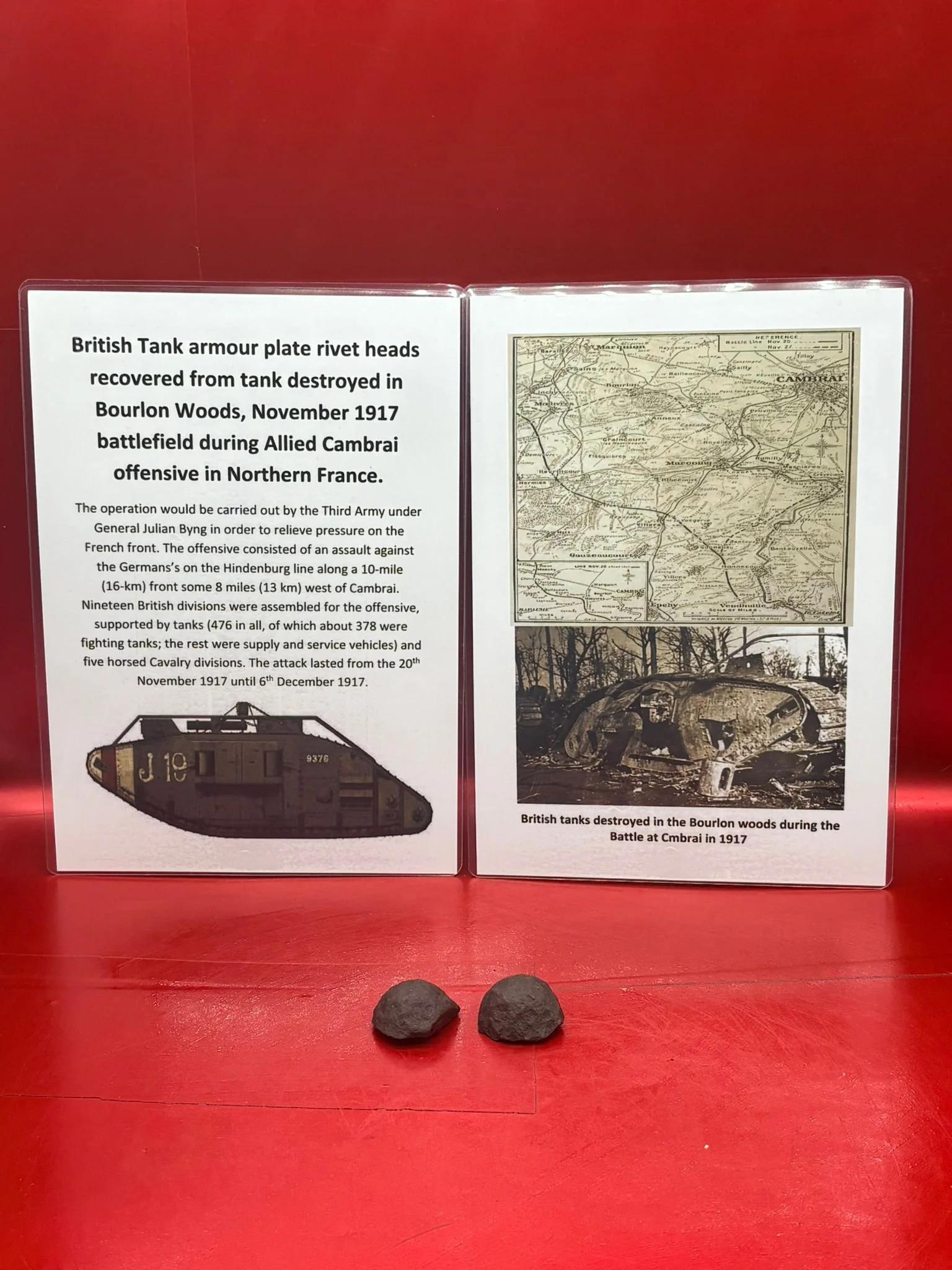 Image 1 of 7
Image 1 of 7

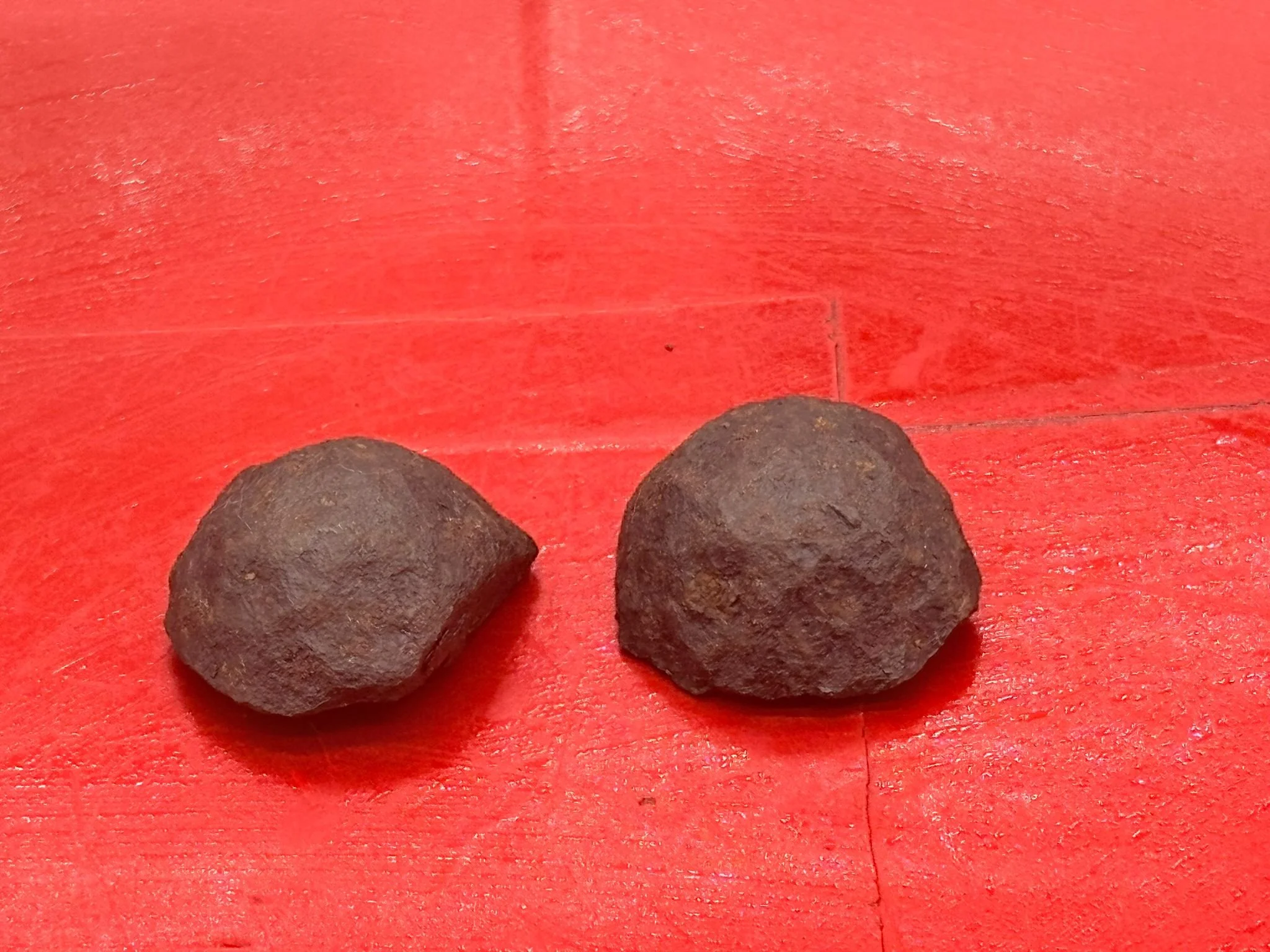 Image 2 of 7
Image 2 of 7

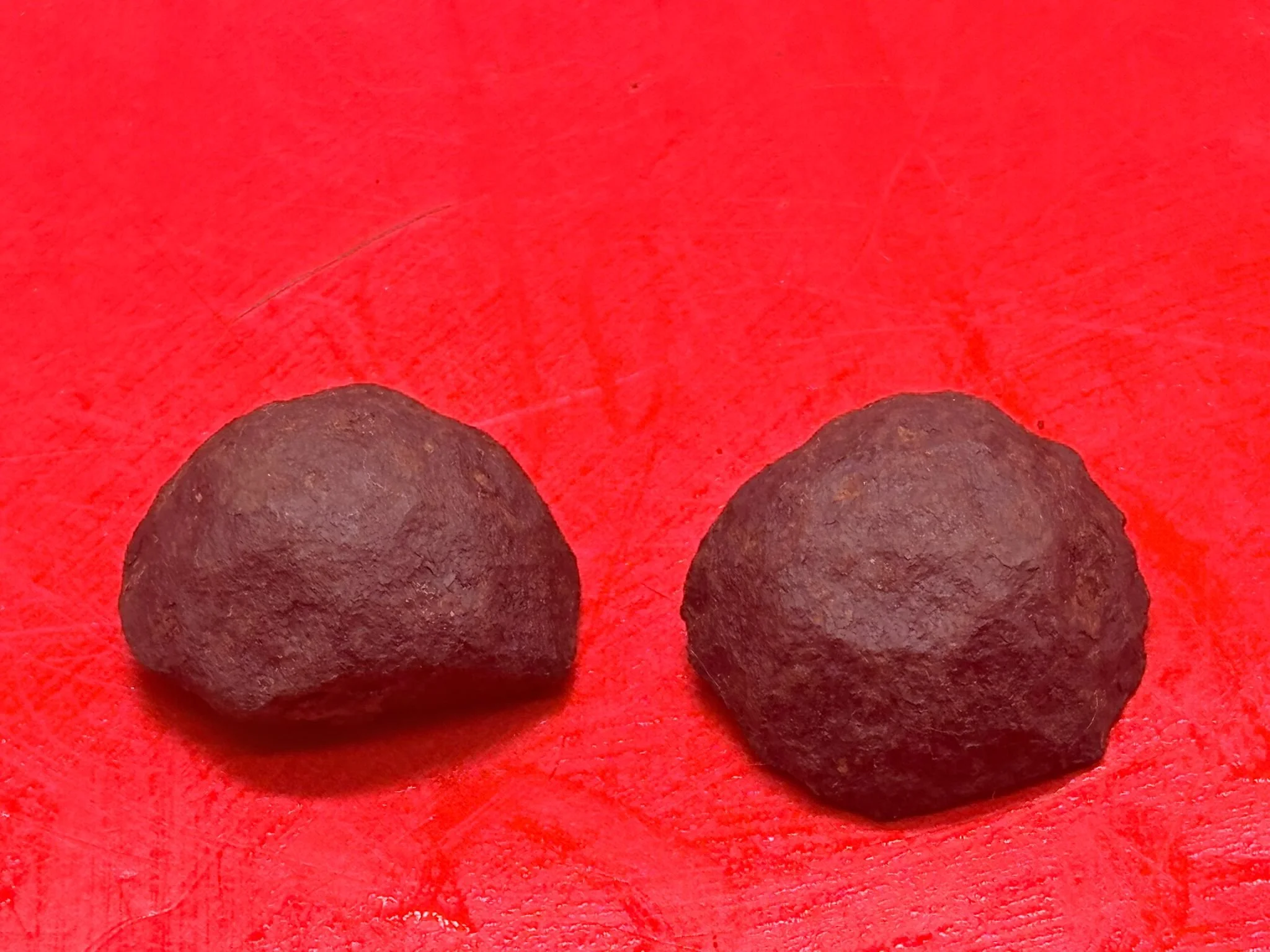 Image 3 of 7
Image 3 of 7

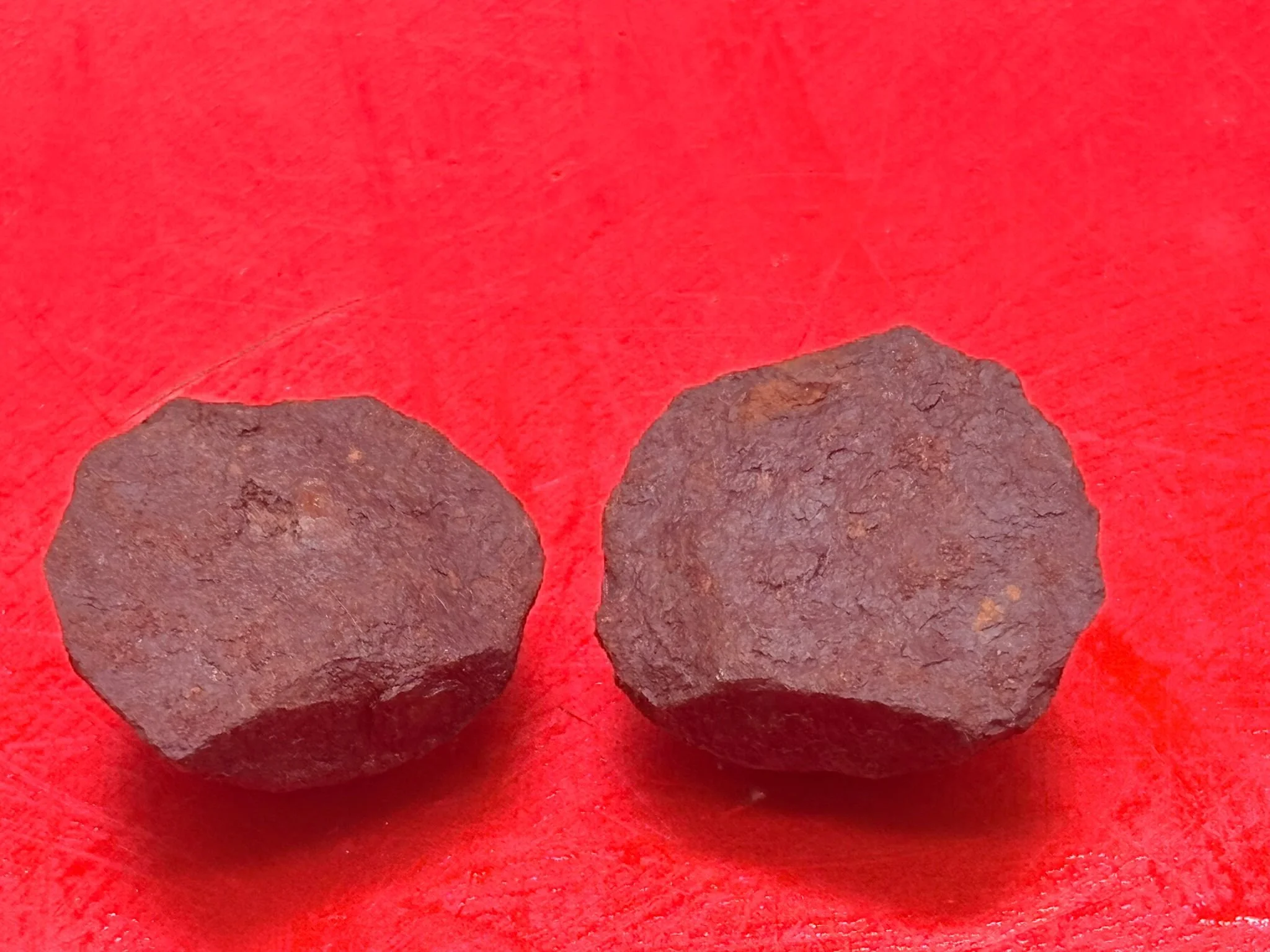 Image 4 of 7
Image 4 of 7

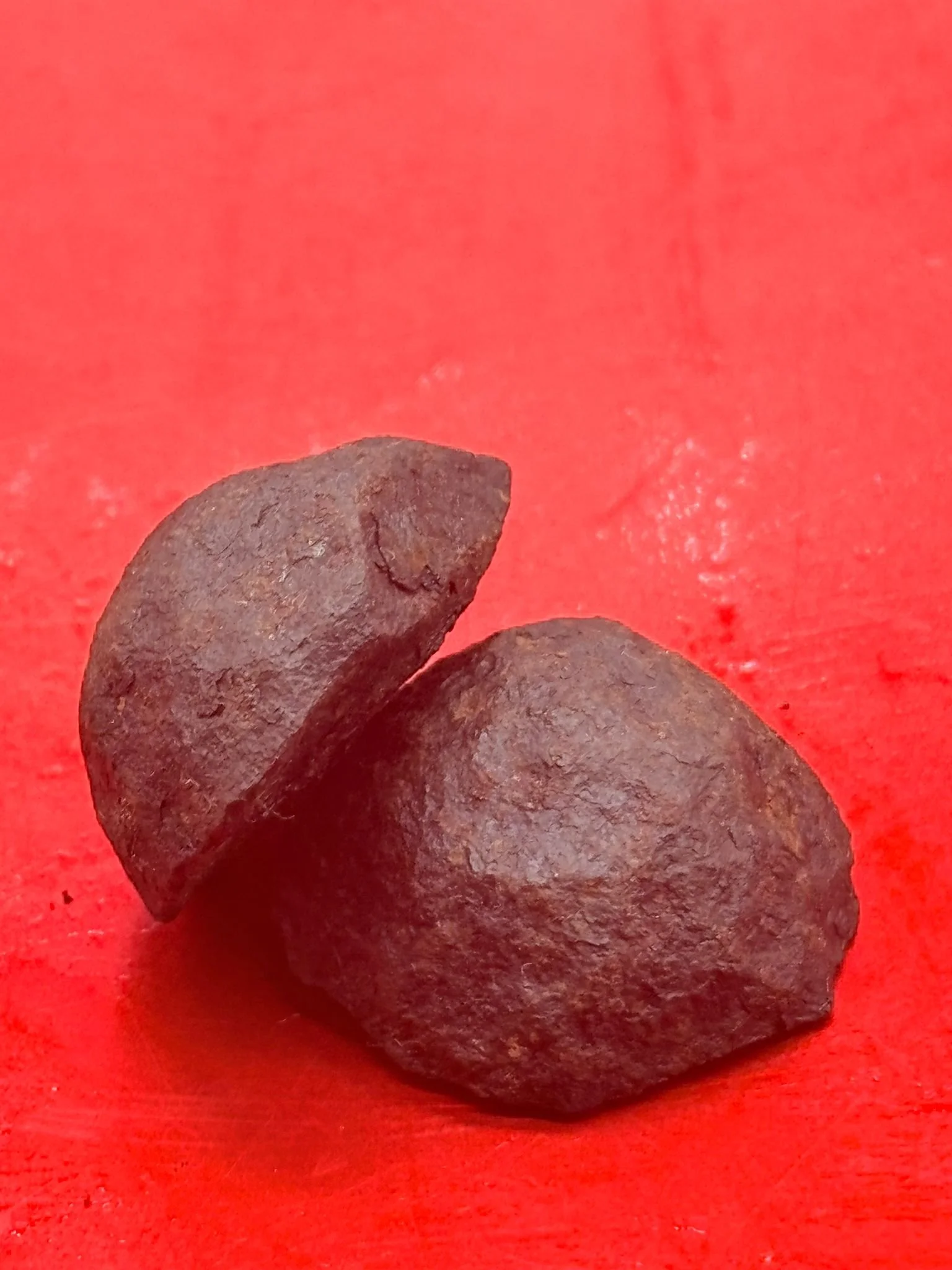 Image 5 of 7
Image 5 of 7

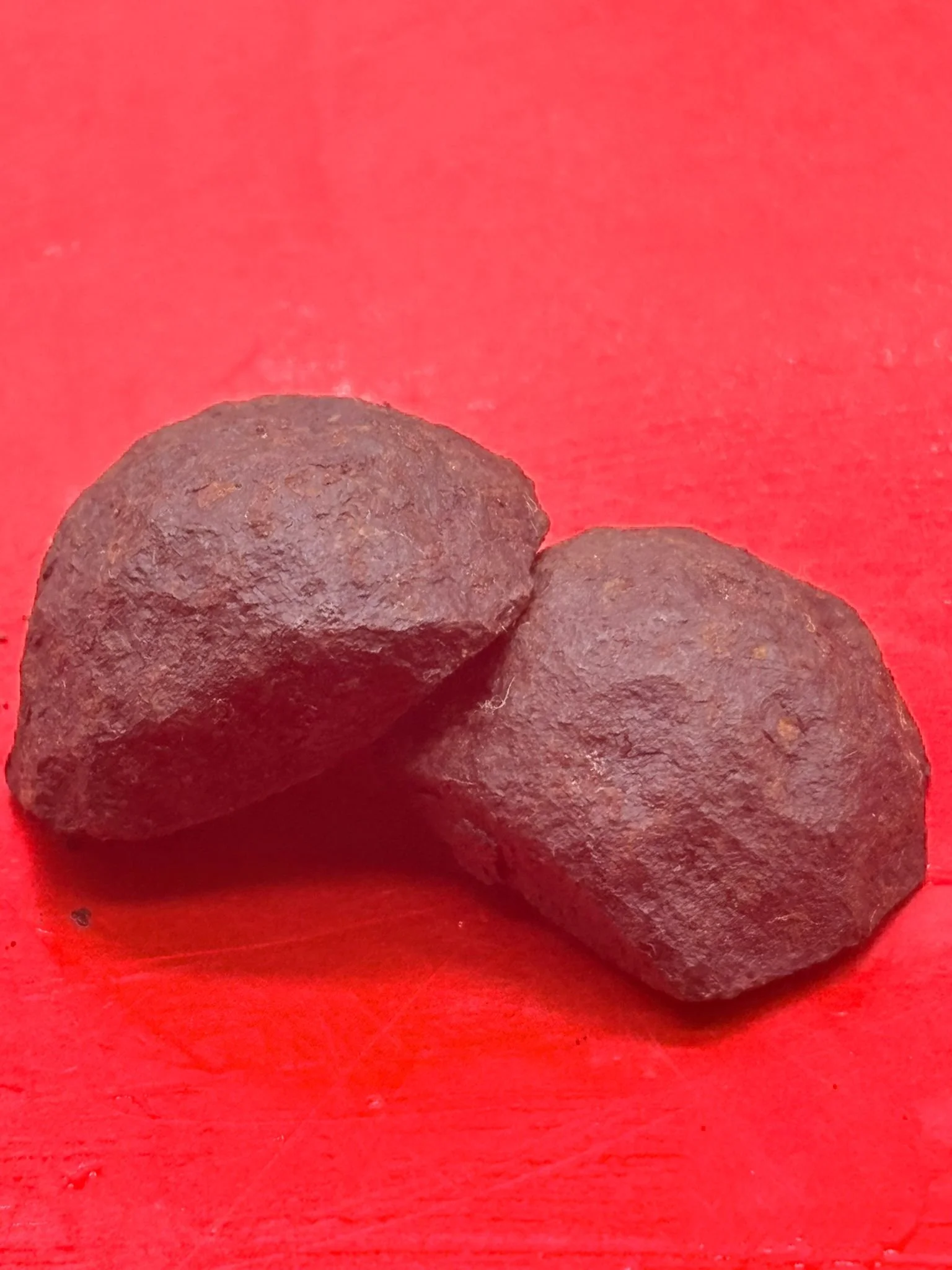 Image 6 of 7
Image 6 of 7

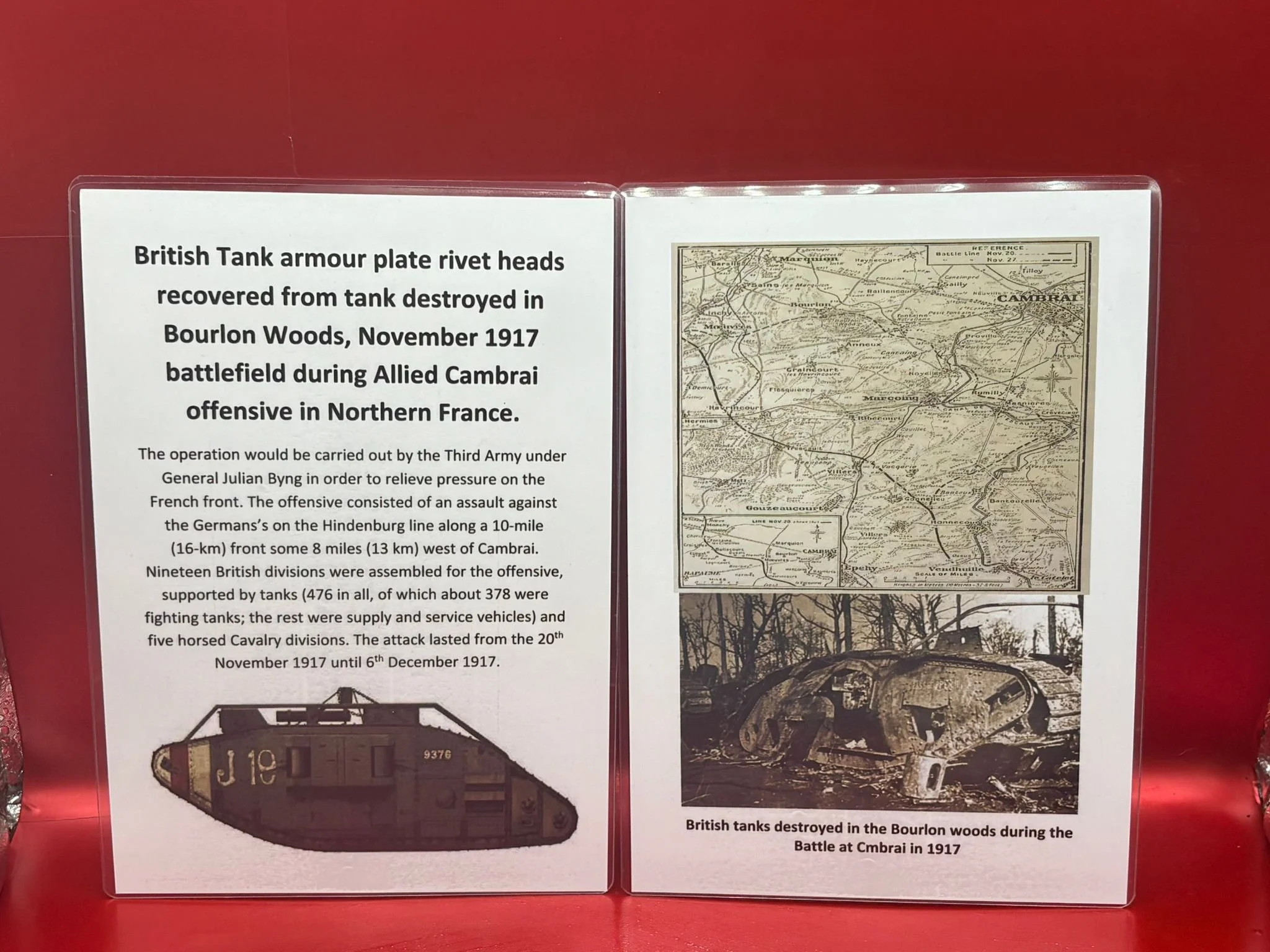 Image 7 of 7
Image 7 of 7








Very rare British Tank pair of armour plate rivet heads recovered from a tank destroyed in Bourlon Woods the November 1917 battlefield during Allied Cambrai offensive.
This is a very rare pair of British Tank armour plate rivet heads.The rivets have blown apart when the tank was hit they have ripped and bent up by an explosion they are in relic condition, rusty but solid and are in overall very good, solid condition for recovered battlefield finds they have been very well cleaned and are perfect for display or any collection. The rivet heads where recovered from a tank destroyed in Bourlon Woods the November 1917 battlefield during Allied Cambrai offensive.The parts come with 2 x A5 laminated information cards with pictures and map.
The operation would be carried out by the Third Army under General Julian Byng in order to relieve pressure on the French front. The offensive consisted of an assault against the Germans’s on the Hindenburg line along a 10-mile (16-km) front some 8 miles (13 km) west of Cambrai. Nineteen British divisions were assembled for the offensive, supported by tanks (476 in all, of which about 378 were fighting tanks; the rest were supply and service vehicles) and five horsed Cavalry divisions. The attack lasted from the 20th November 1917 until 6th December 1917.
This is a very rare pair of British Tank armour plate rivet heads.The rivets have blown apart when the tank was hit they have ripped and bent up by an explosion they are in relic condition, rusty but solid and are in overall very good, solid condition for recovered battlefield finds they have been very well cleaned and are perfect for display or any collection. The rivet heads where recovered from a tank destroyed in Bourlon Woods the November 1917 battlefield during Allied Cambrai offensive.The parts come with 2 x A5 laminated information cards with pictures and map.
The operation would be carried out by the Third Army under General Julian Byng in order to relieve pressure on the French front. The offensive consisted of an assault against the Germans’s on the Hindenburg line along a 10-mile (16-km) front some 8 miles (13 km) west of Cambrai. Nineteen British divisions were assembled for the offensive, supported by tanks (476 in all, of which about 378 were fighting tanks; the rest were supply and service vehicles) and five horsed Cavalry divisions. The attack lasted from the 20th November 1917 until 6th December 1917.
